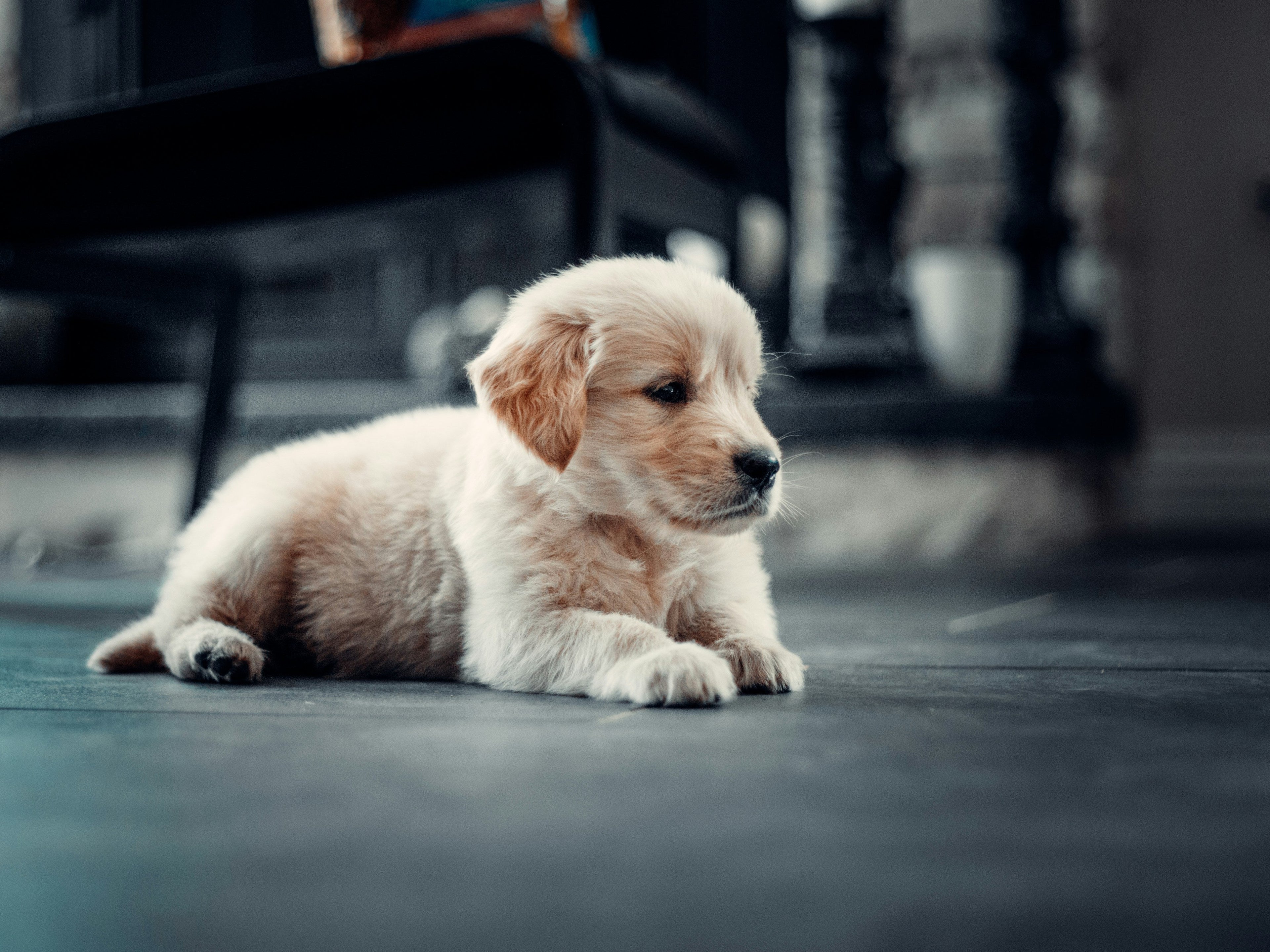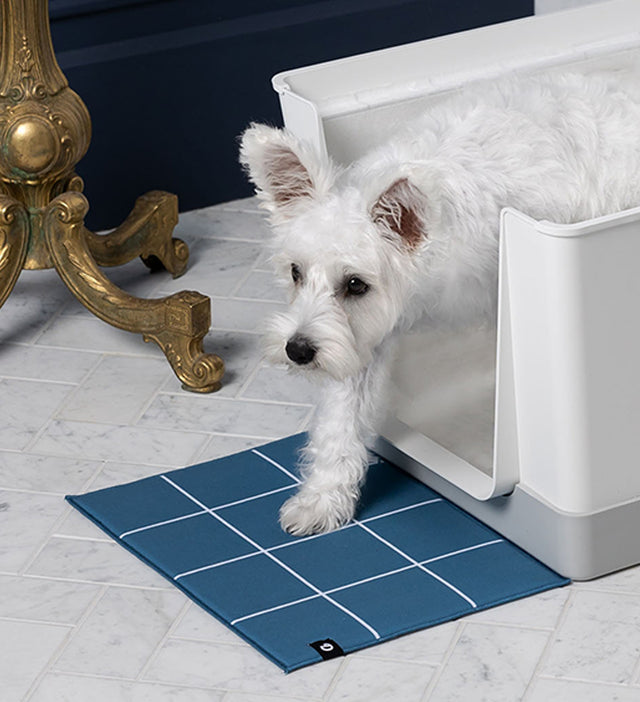7-Day Plan to Potty Train Your Puppy

Bringing home a new puppy is full of excitement, and one of the first challenges many new pet owners face is potty training.
While it may seem daunting at first, potty training can be done quickly and effectively with the right strategy, patience, and commitment. With these steps, you'll be able to get your puppy trained in just seven days.
The Importance of Potty Training
Potty training is more than just teaching your puppy where to go; it's about building a foundation of good habits that will last a lifetime. A well-trained puppy means fewer messes in the house and a smoother transition into adulthood. It also strengthens the bond between you and your dog. Puppies learn best when there’s consistency and clear guidance.
Puppy Training Tips and The Power of Consistency
For successful potty training, it’s essential to maintain a consistent routine. Puppies thrive when they know what to expect, so keeping potty times consistent will help them understand when it's time to go. The more predictable your schedule, the faster your puppy will catch on.
Puppy Potty Routine | Pick the Right Potty Area
Designate a specific area in your yard or an indoor spot where your puppy can do their business. This location should be quiet and away from distractions, making it easier for your puppy to focus on the task at hand. Choose a spot that is easy to access for your puppy and one that remains consistent each time.

The 7-Day Potty Training Plan
Day 1: Getting Started
The very first day is primarily focused on observation, which is crucial for setting a solid foundation for your time with your new puppy. It’s essential to take the time to carefully watch and note your puppy's natural habits and routines.
Pay particular attention to how often they need to go outside, as well as any signs they may show when they need to relieve themselves. This understanding will help you become attuned to their specific needs and make the process smoother for both you and your puppy in the days to come.
Establish a Schedule: Puppies typically need to go outside after meals, playtime, or naps. Begin by taking your puppy outside every hour, regardless of whether you think they need to go.
Watch for Signs: Puppies will give subtle clues when they need to potty. Look for behaviors like sniffing the ground, circling, or whimpering. When you see these signs, take your puppy outside immediately.
Introduce a Potty Command: Pick a simple word or phrase like “go potty” and use it each time you take your puppy outside. This will help them associate the action with the command.
Days 2-3: Reinforce Positive Behaviors
Continue following your established schedule, but focus now on reinforcing the good behaviors.
Praise and Treat: When your puppy successfully goes potty outside, shower them with praise and offer a small treat. Positive reinforcement helps them understand they’ve done something right.
Stay Calm with Accidents: Puppies will have accidents, and that's normal. If your puppy has an accident inside, clean it up quietly and move on. Don’t punish them; it can cause confusion and fear, which will slow the training process.
Days 4-5: Extend Time Between Breaks
By now, your puppy should have a good understanding of the potty schedule. It's time to gradually extend the time between breaks.
Increase the Time: Add 15-minute increments between potty breaks and watch how your puppy reacts. Make sure you're still taking them outside frequently enough to avoid accidents.
Keep Consistent Meals and Watering: Keep your puppy’s feeding and watering schedule consistent so they can get used to their potty needs.
Day 6: The Nighttime Challenge
Nighttime potty training can be tricky, but it’s manageable with the right approach.
Limit Water Before Bed: Cut back on water intake about an hour before bedtime to minimize the chances of accidents overnight.
Night Potty Breaks: You may need to take your puppy outside once or twice during the night, especially if they are very young. As they grow older, they’ll be able to hold it for longer periods.
Day 7: Review and Adjust
By day seven, your puppy should have a good understanding of their potty routine. But remember, every puppy learns at their own pace.
Evaluate Progress: Assess your puppy’s progress. If they’re still having accidents, you may need to adjust the schedule or take more frequent breaks.
Celebrate the Wins: Take time to praise your puppy for their hard work. Every small victory is a step toward success.
Troubleshooting Common Challenges
Potty training can often turn into a challenge, and it's not always a seamless journey. As pet owners, we may encounter various hurdles along the way that can make the process a bit more complicated. To assist you in navigating these common challenges, I will outline some of the typical issues you may face during potty training and provide you with practical strategies for how to effectively address them.
Setbacks in Training
Experiencing setbacks while potty training is entirely normal, especially when dealing with puppies. It’s important to understand that these little furballs are learning, and learning often comes with its fair share of ups and downs.
If you find that your puppy is having an unexpected accident or seems to forget their training, it’s a good idea to go back and revisit the foundational steps you initially took.
Reinforcing the established routine can help solidify their understanding, so be patient and consistent as you guide them back on track. Regular practice and positive reinforcement will ensure that they grasp the necessary skills over time.
Stubborn Puppies
Some puppies may display a strong-willed attitude that makes the training process feel more challenging. If you are facing a particularly stubborn puppy, consider making adjustments to your approach.
One effective strategy is to increase the frequency of potty breaks, especially after meals or playtime when they are more likely to need to go. Additionally, enhance your training by offering higher-value treats that your puppy finds irresistible.
This encourages them to associate the desired behavior with positive rewards, making them more eager to comply with your training efforts.
Indoor Accidents
If your puppy continues to have multiple accidents indoors, it is essential to reassess and examine their daily routine closely. Take a moment to evaluate how often you are taking them outside for potty breaks.
Are you providing enough opportunities for them to relieve themselves? Moreover, consider whether the designated potty spot is free from distractions that might interrupt their focus. Sometimes a few small adjustments can make a significant difference.
By ensuring that your puppy has a reliable routine and a suitable environment, you can help minimize those pesky indoor accidents.
Training Products to Help You Out
When it comes to potty training your pet, there are several innovative products available that can significantly simplify the process. These tools are designed with both pets and their owners in mind, making the journey of training a bit more manageable and less stressful.
-
Dog Litter Boxes: For pet owners living in apartments or those with limited access to outdoor spaces, a dog litter box provides a convenient indoor potty solution. It offers a designated space for your puppy to relieve themselves while keeping your home clean. With absorbent material and easy-to-clean surfaces, dog litter boxes are also helpful in tracking your puppy’s health through their bathroom habits.
-
Puppy Training Pads: These pads are a great backup for indoor accidents, especially useful when the weather is bad or if you're training a puppy that isn't quite ready for full outdoor potty training. Adding a potty training tray for puppies to your setup can help create a consistent and stress-free routine.
-
Enzyme Cleaners: These products eliminate odors and stains from accidents, ensuring your puppy won’t be tempted to go back to the same spot.
-
Interactive Toys: Keeping your puppy engaged mentally can reduce stress and anxiety, helping them stay focused on training.

Wrapping Up
Potty training a puppy is a rewarding journey that requires patience, consistency, and positive reinforcement. By following a well-structured routine and using the right approach, you can set your puppy up for success in just seven days.
Puppy training isn't just about teaching bathroom habits; it's about building a solid foundation for all of your puppy's future behaviors. Once you establish a puppy potty training routine, you'll notice your furry friend learning quickly and confidently.
Remember, every puppy is different, and consistency is the key to success. As you continue with your puppy training, celebrate the small milestones and don't be afraid to adjust your approach if needed. With dedication and love, you'll enjoy a clean home and a well-behaved puppy. Happy training!
For more helpful insights and information, check out our related blog posts here:
Understanding Your Senior Dog's House Training Needs



